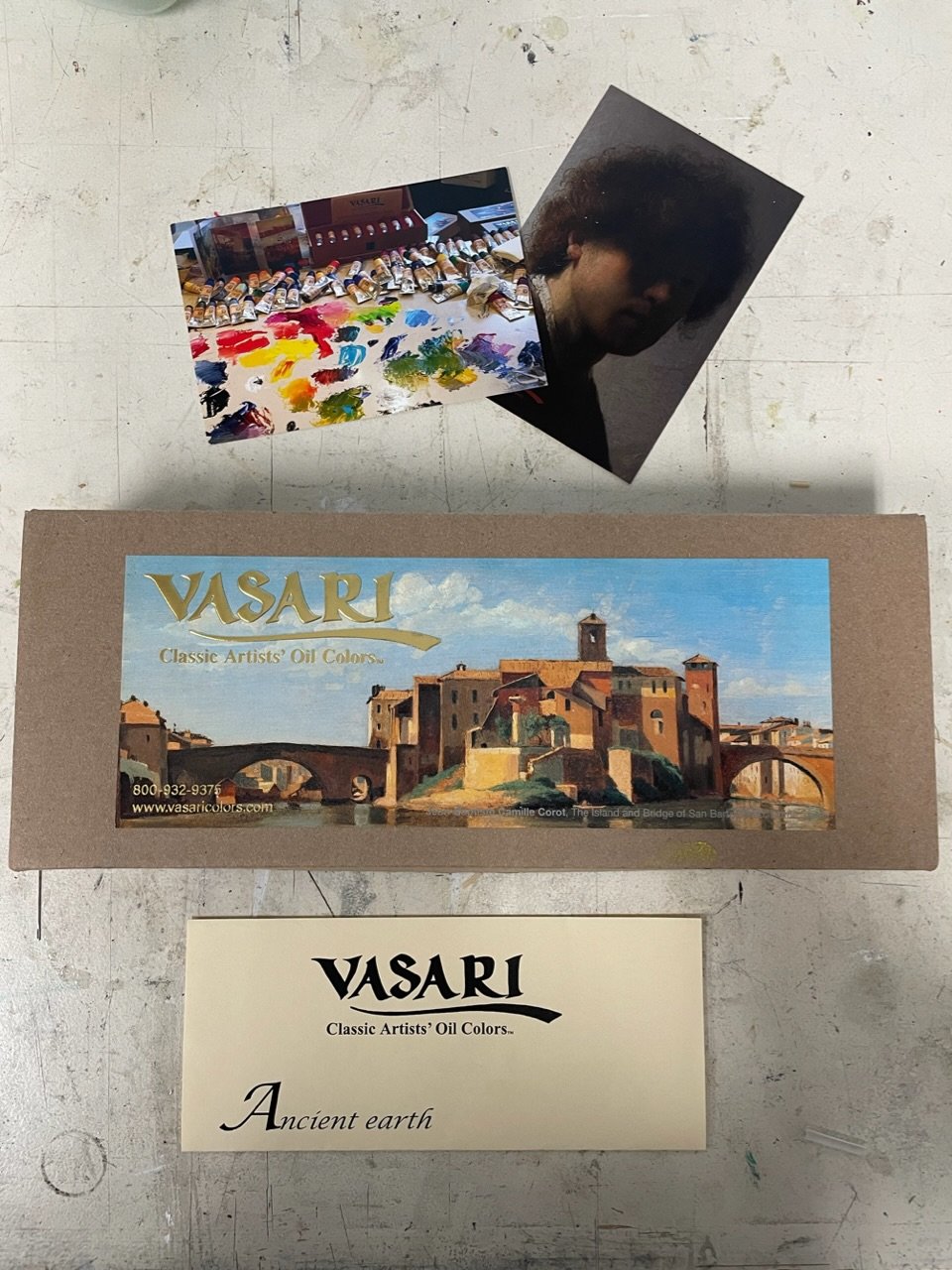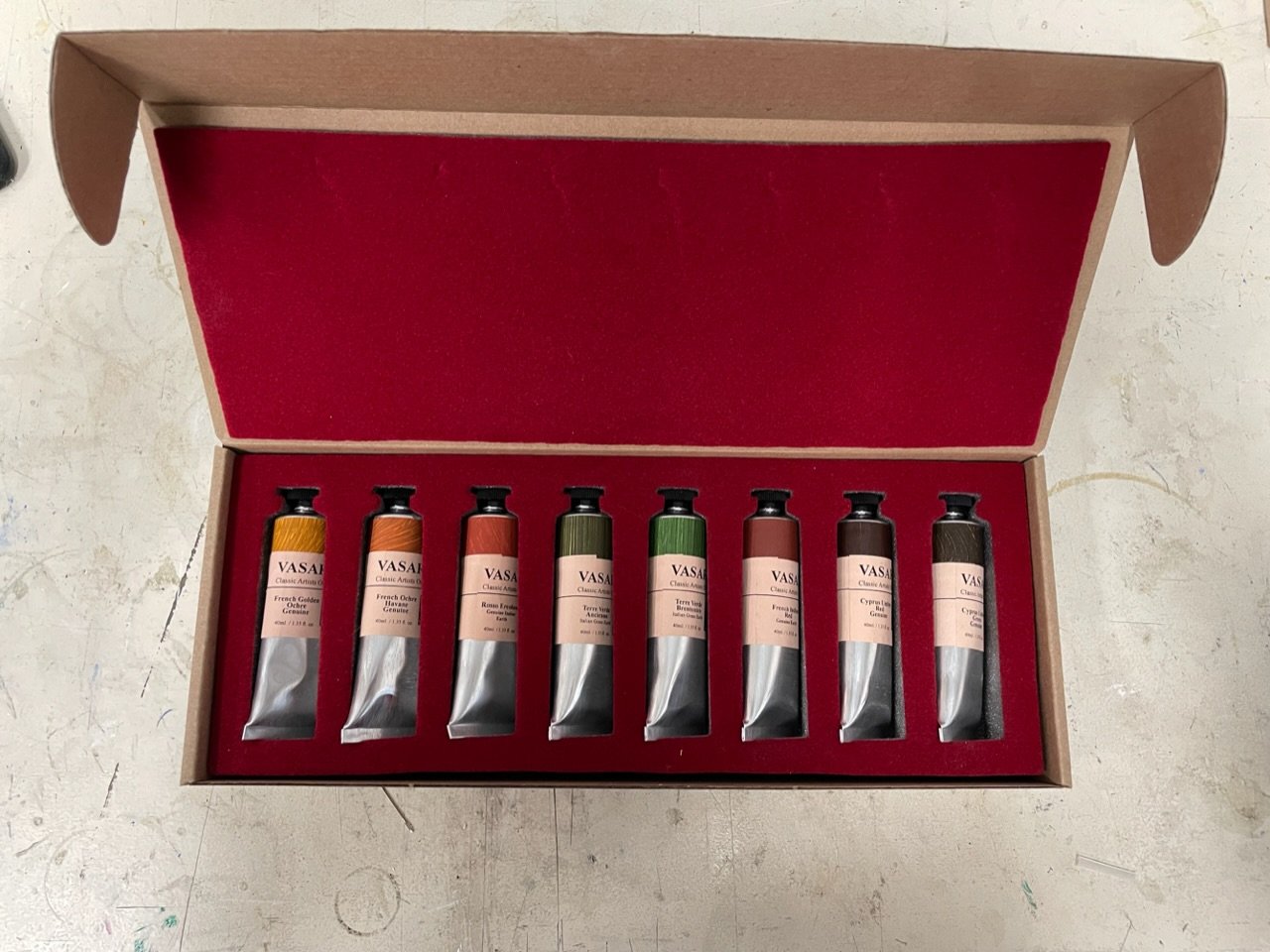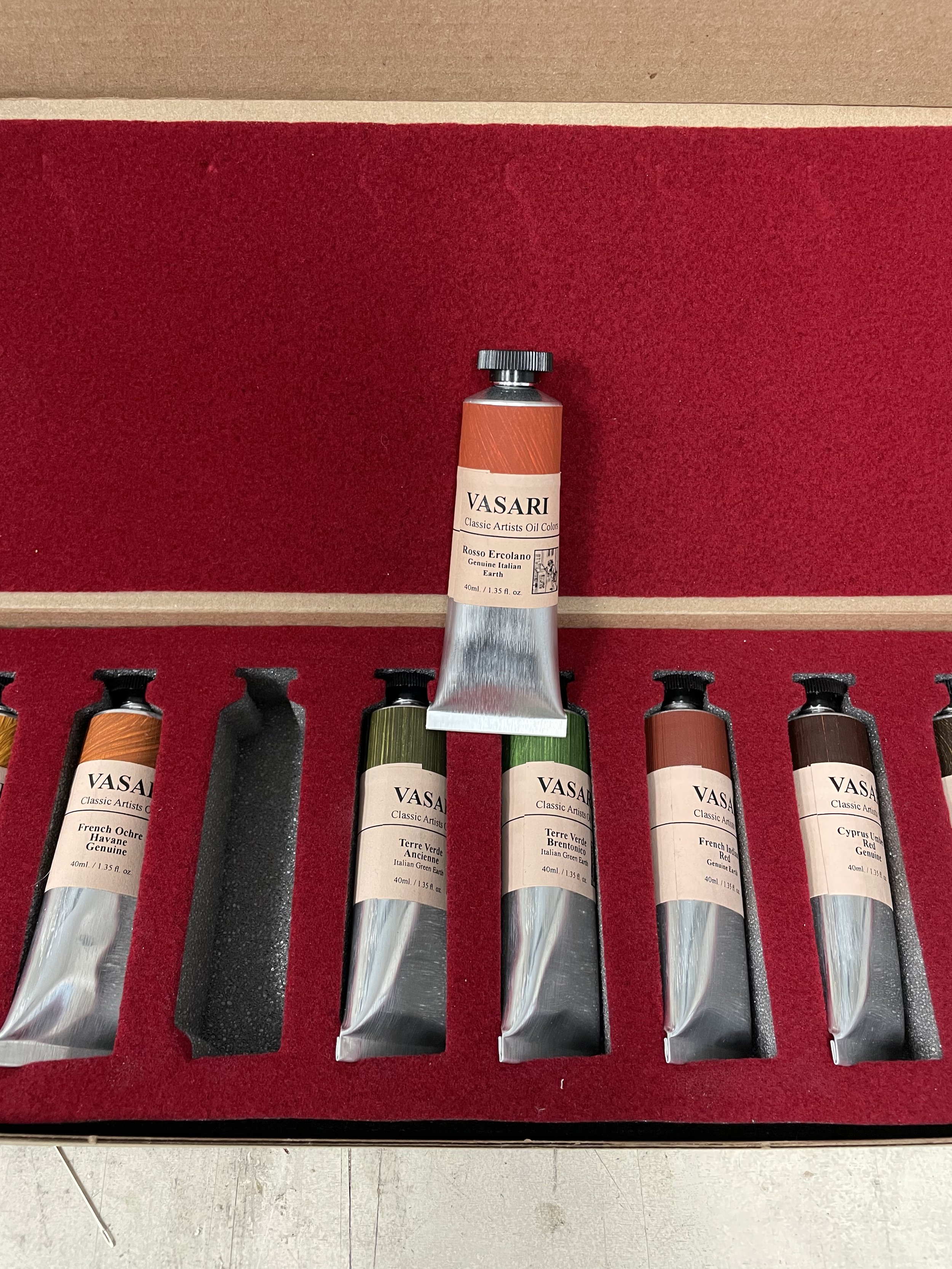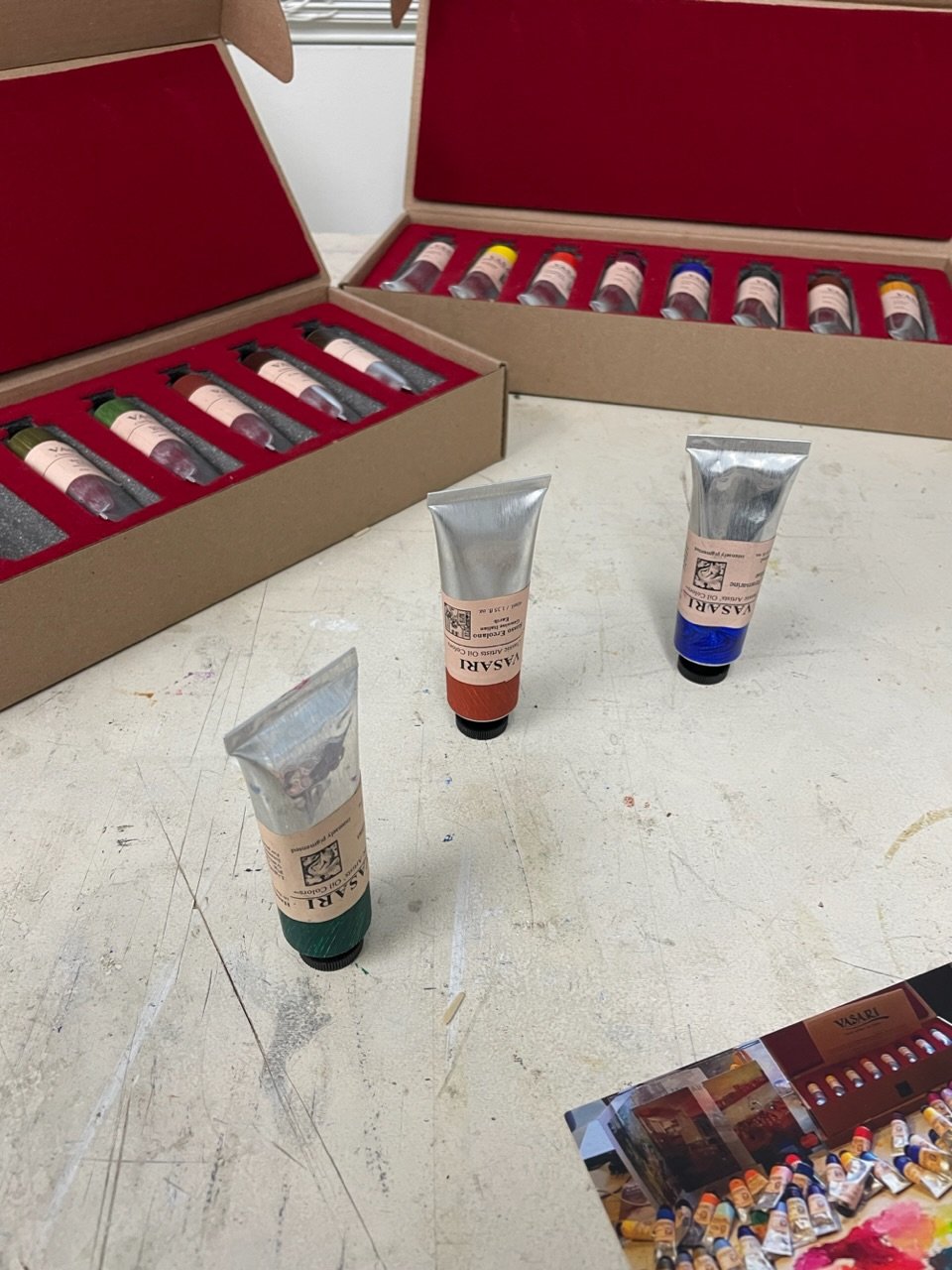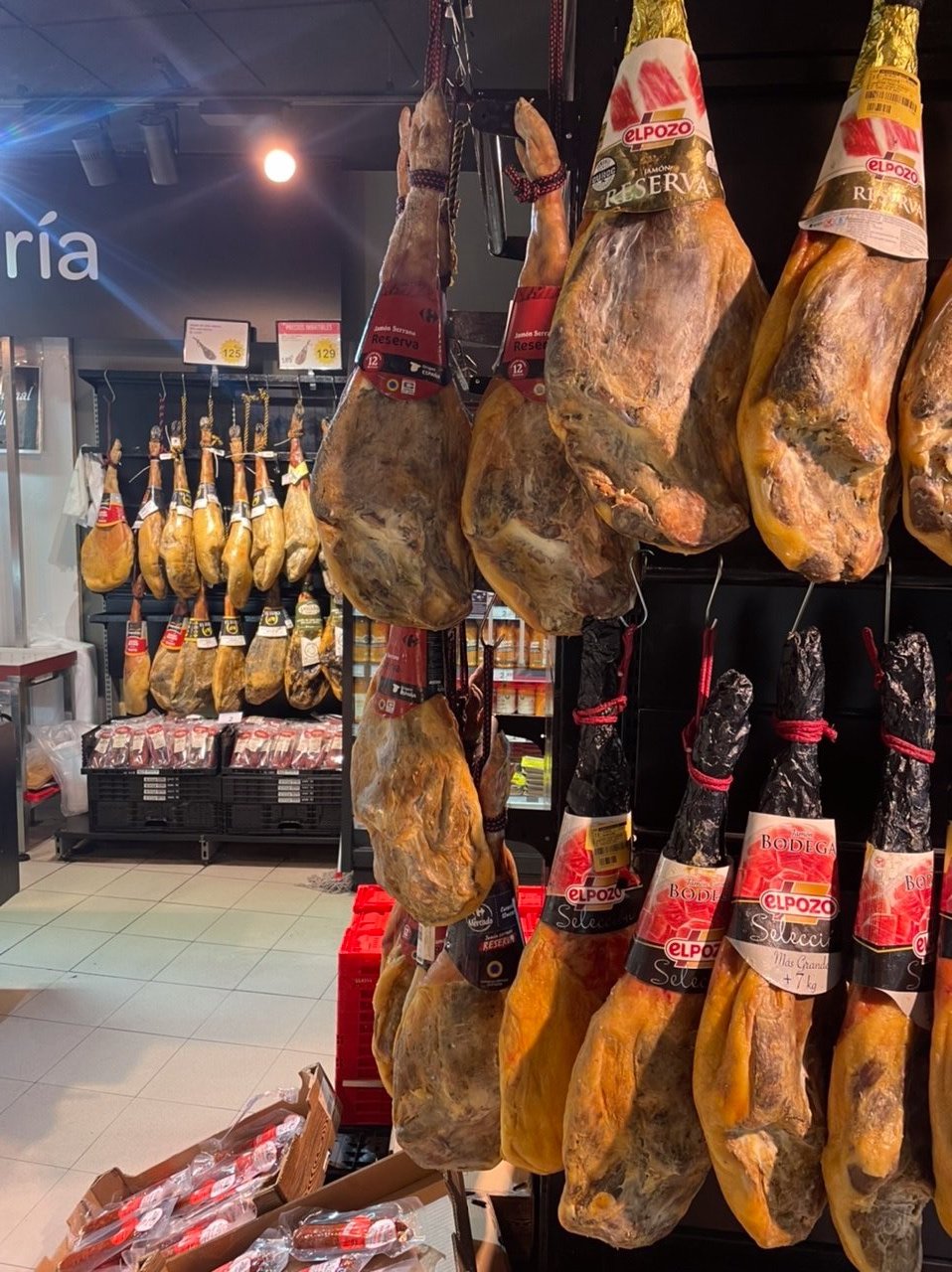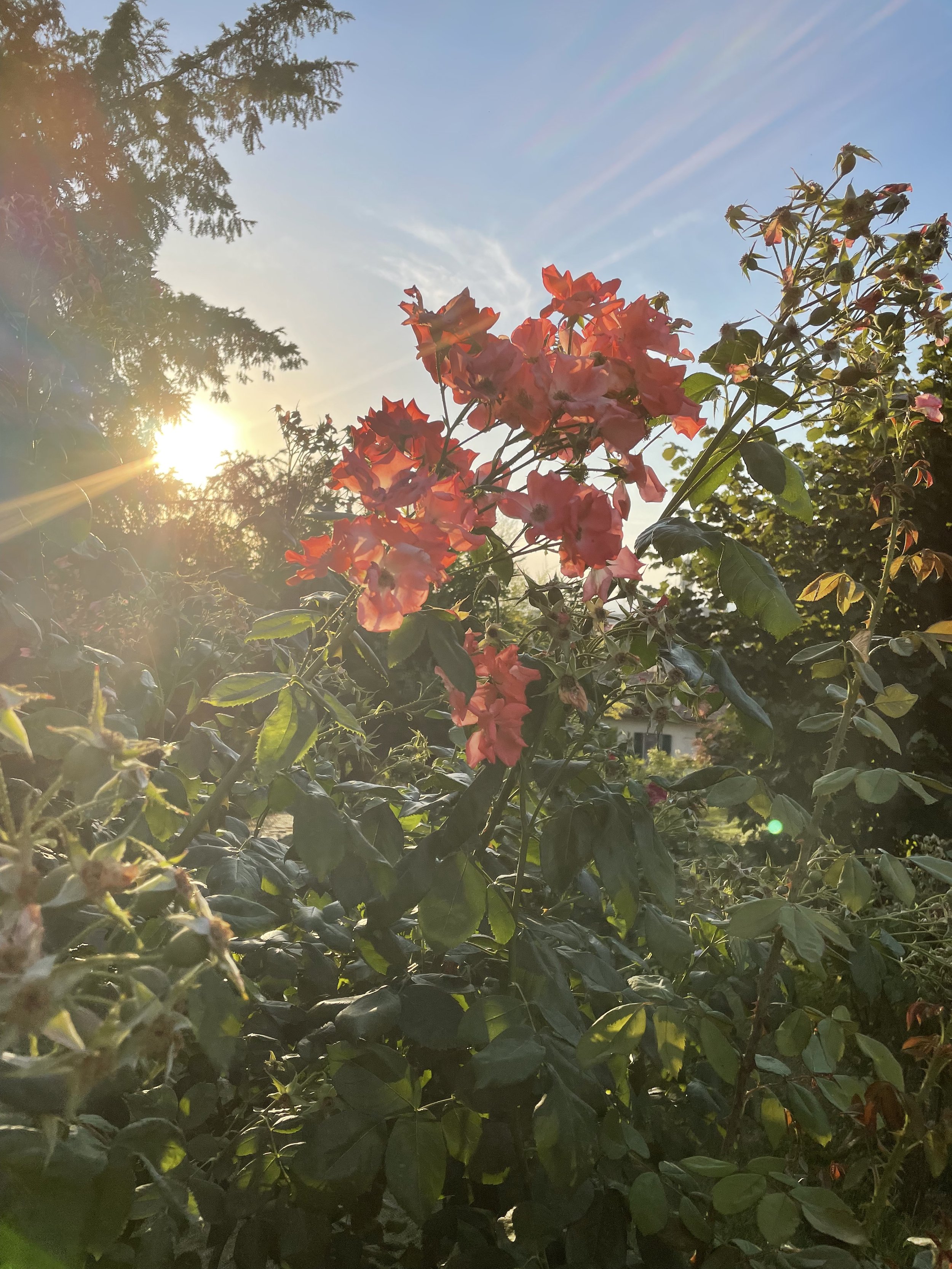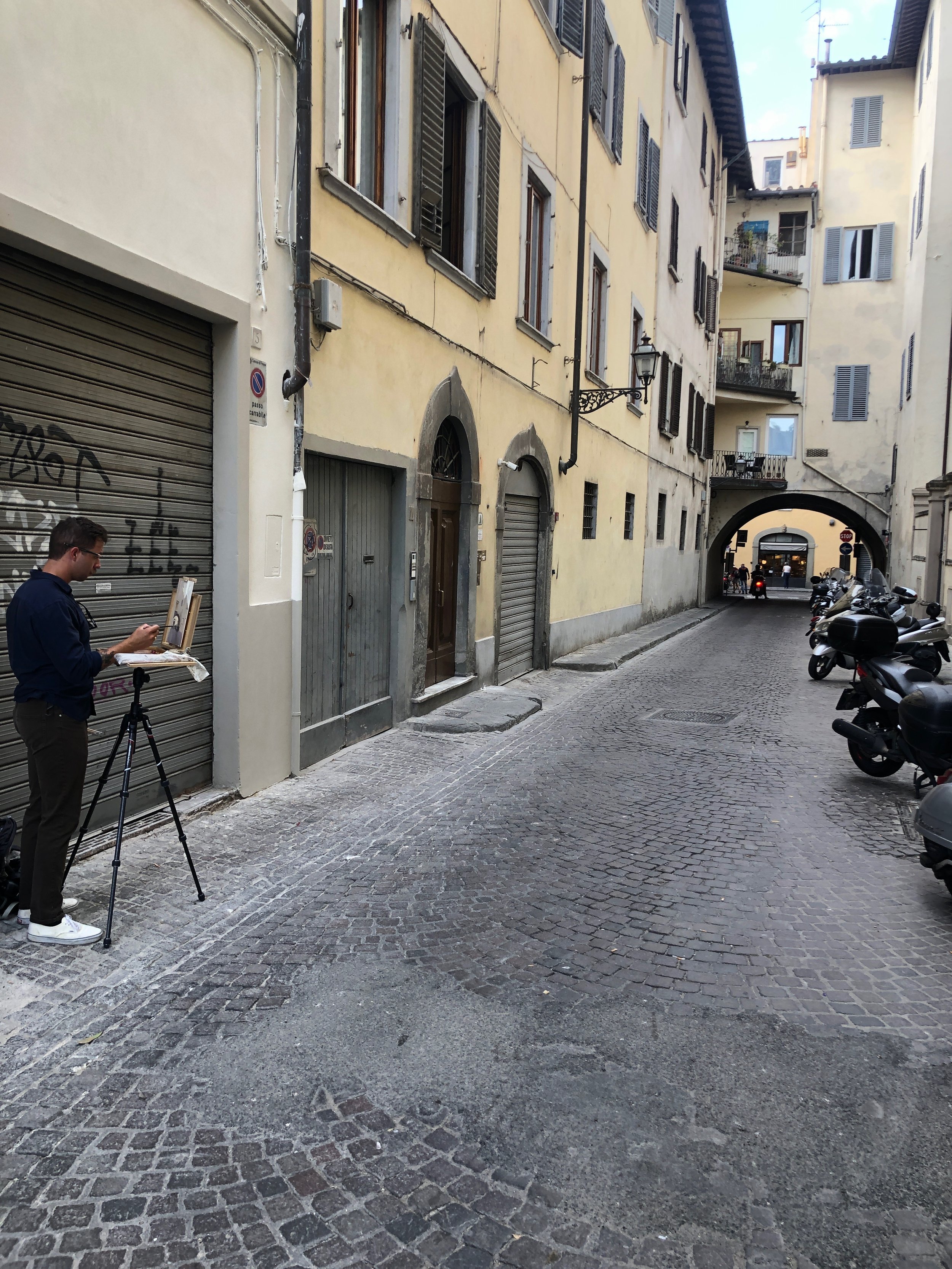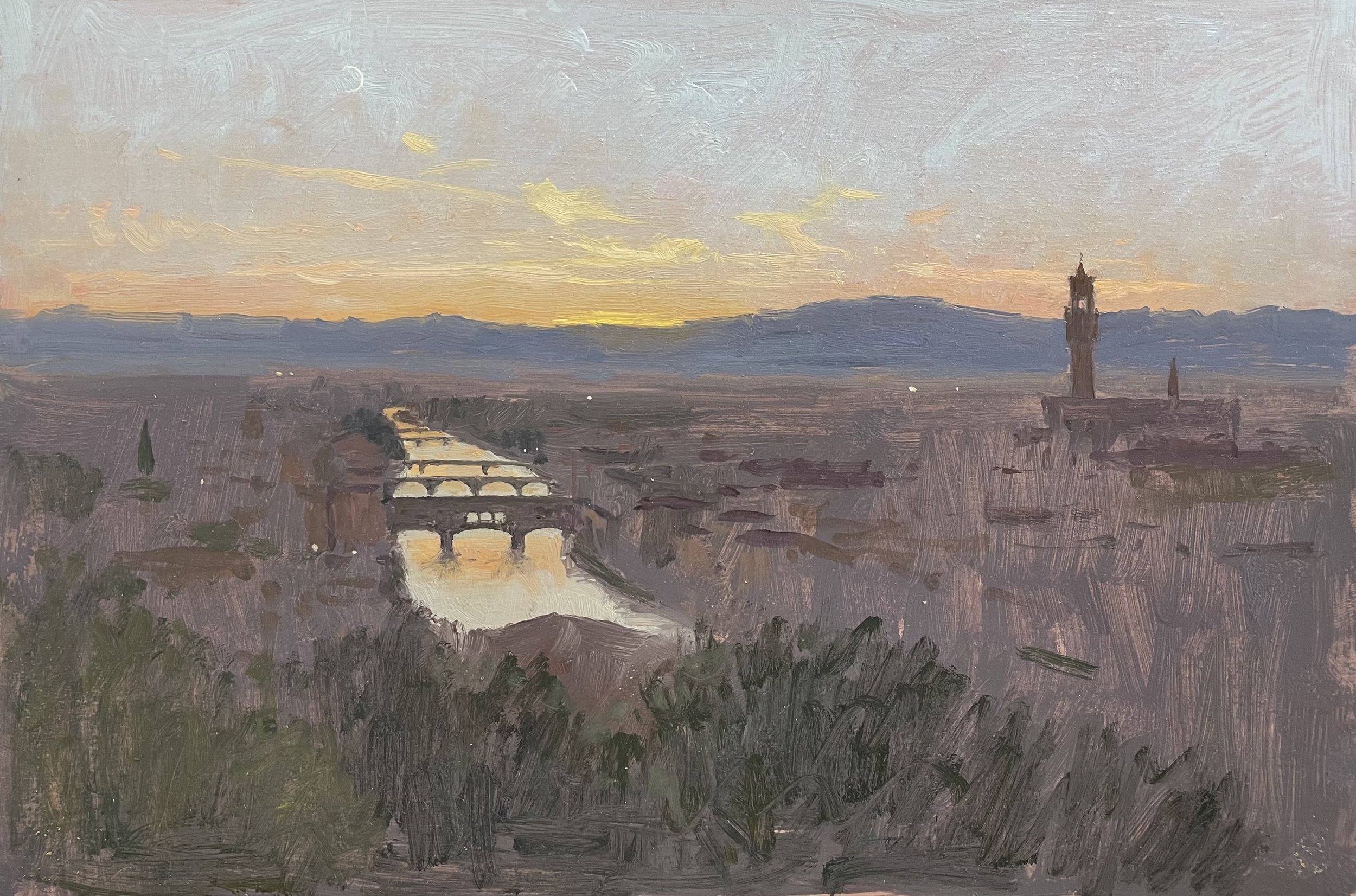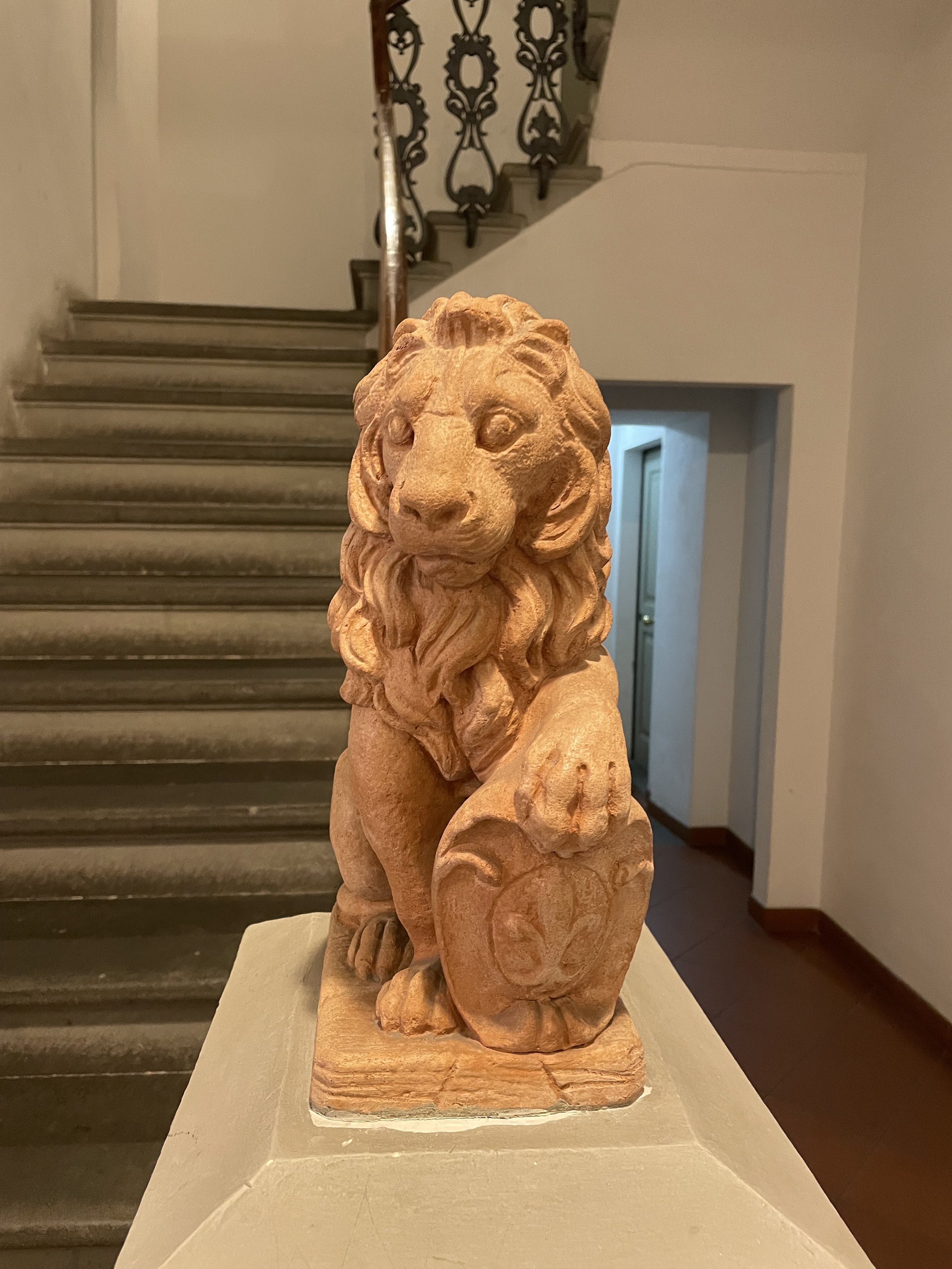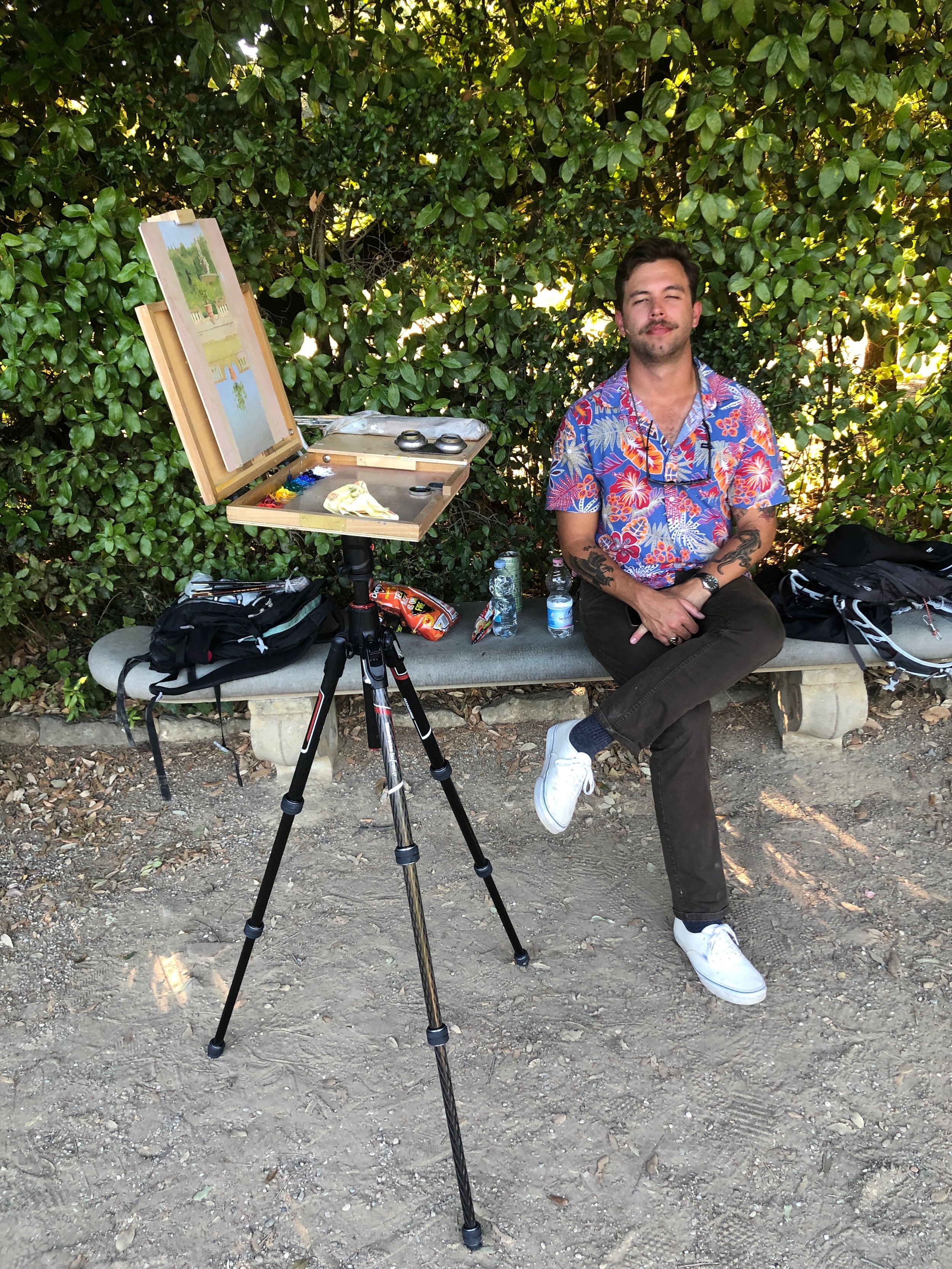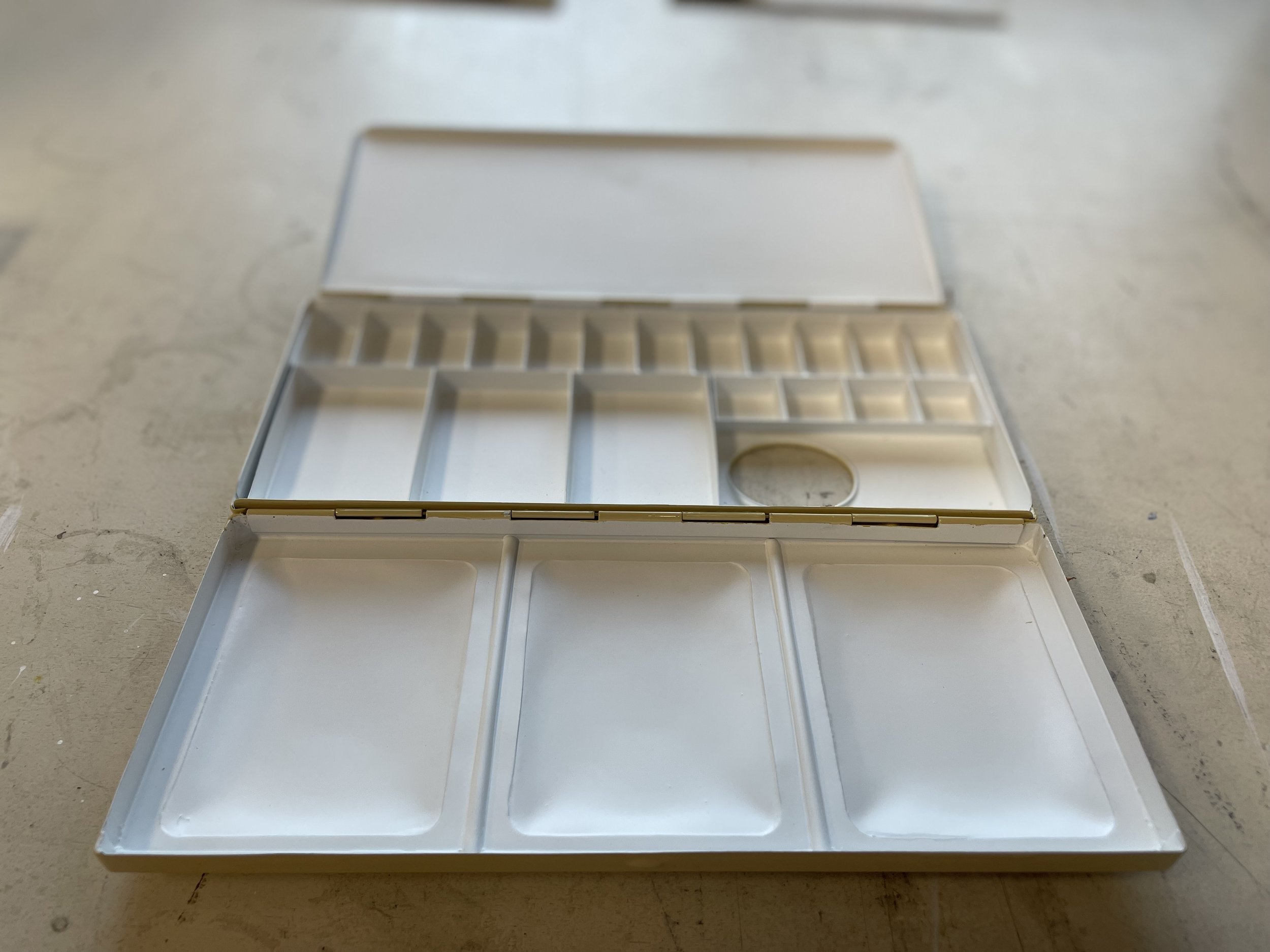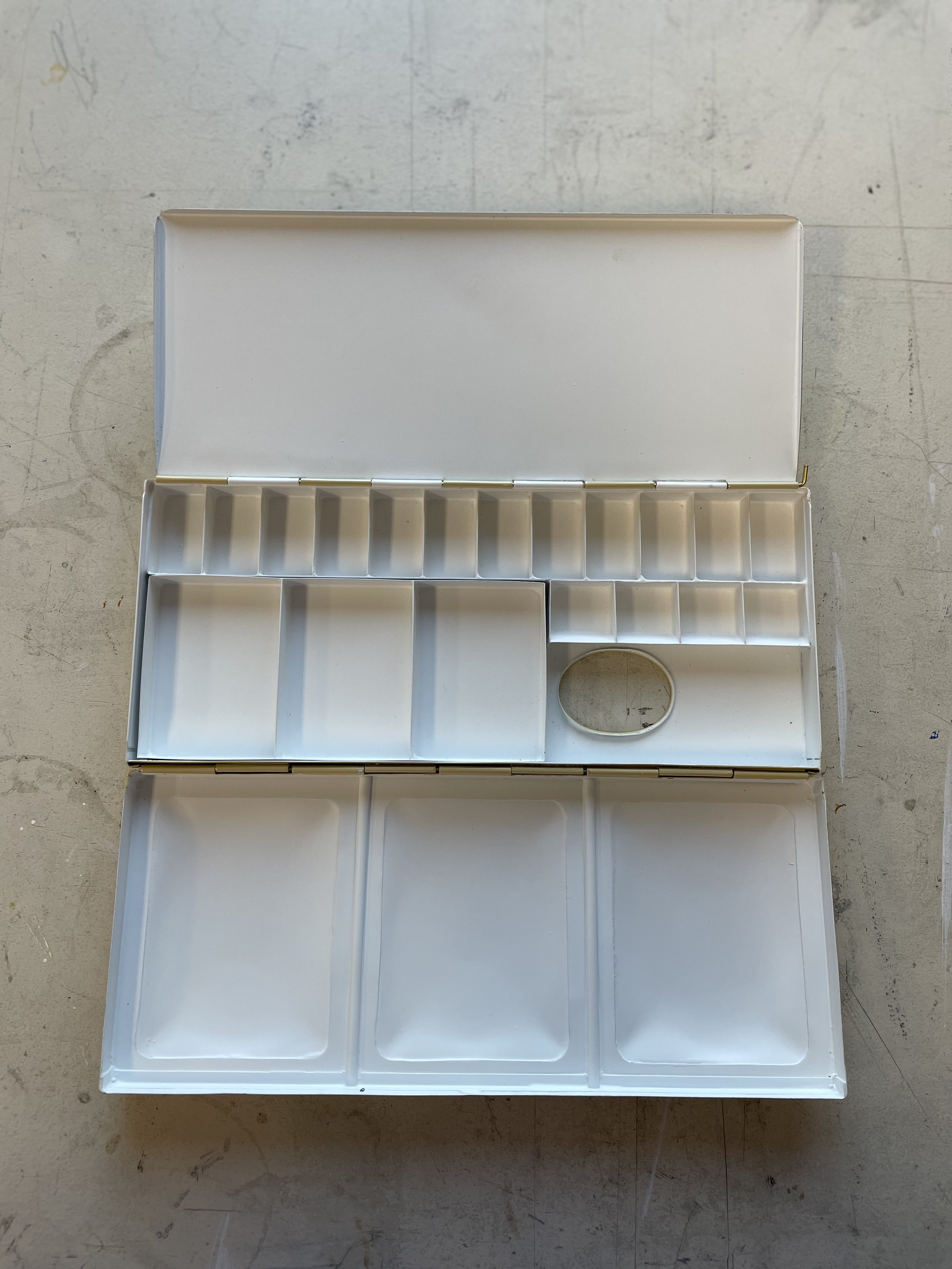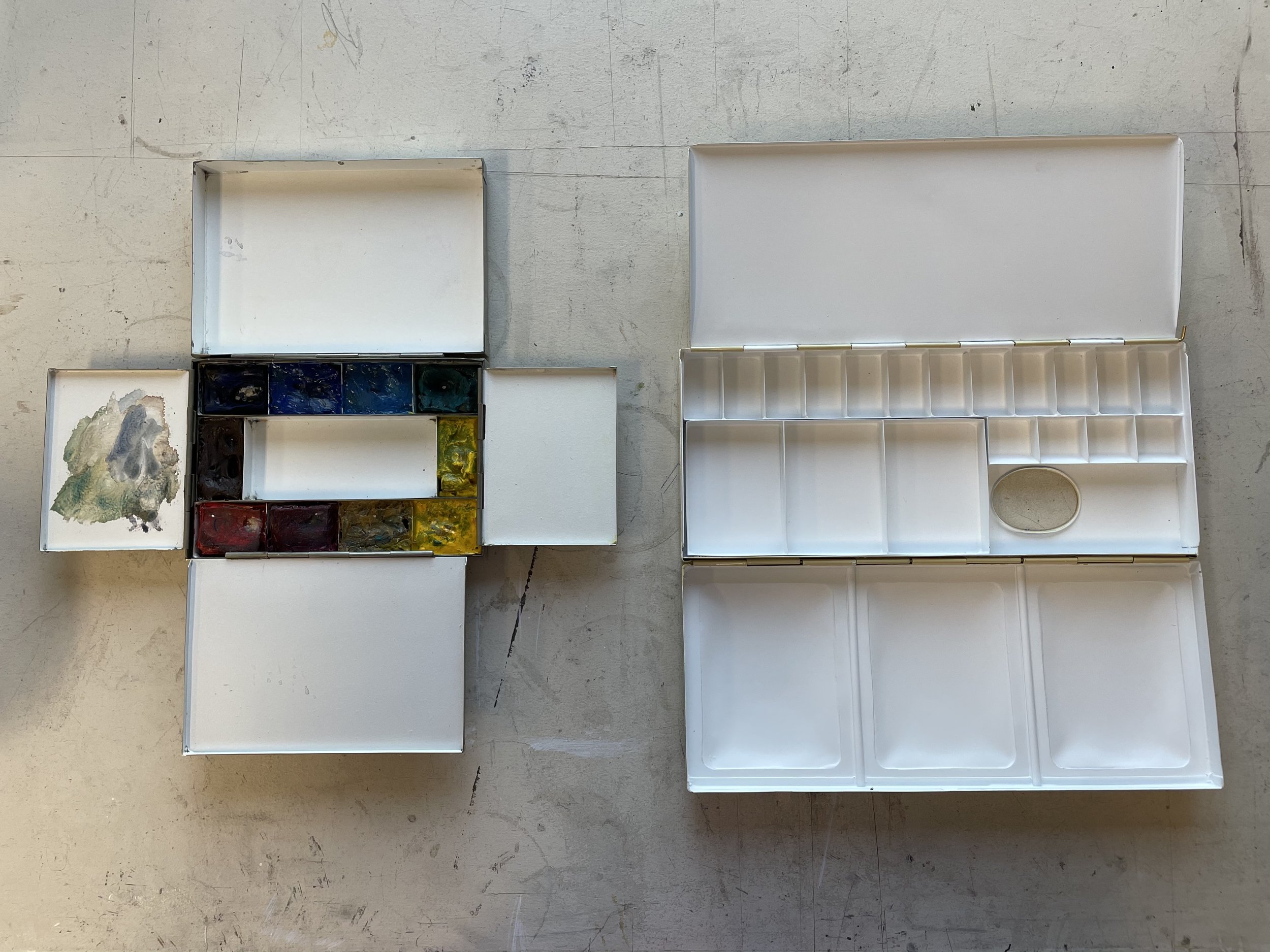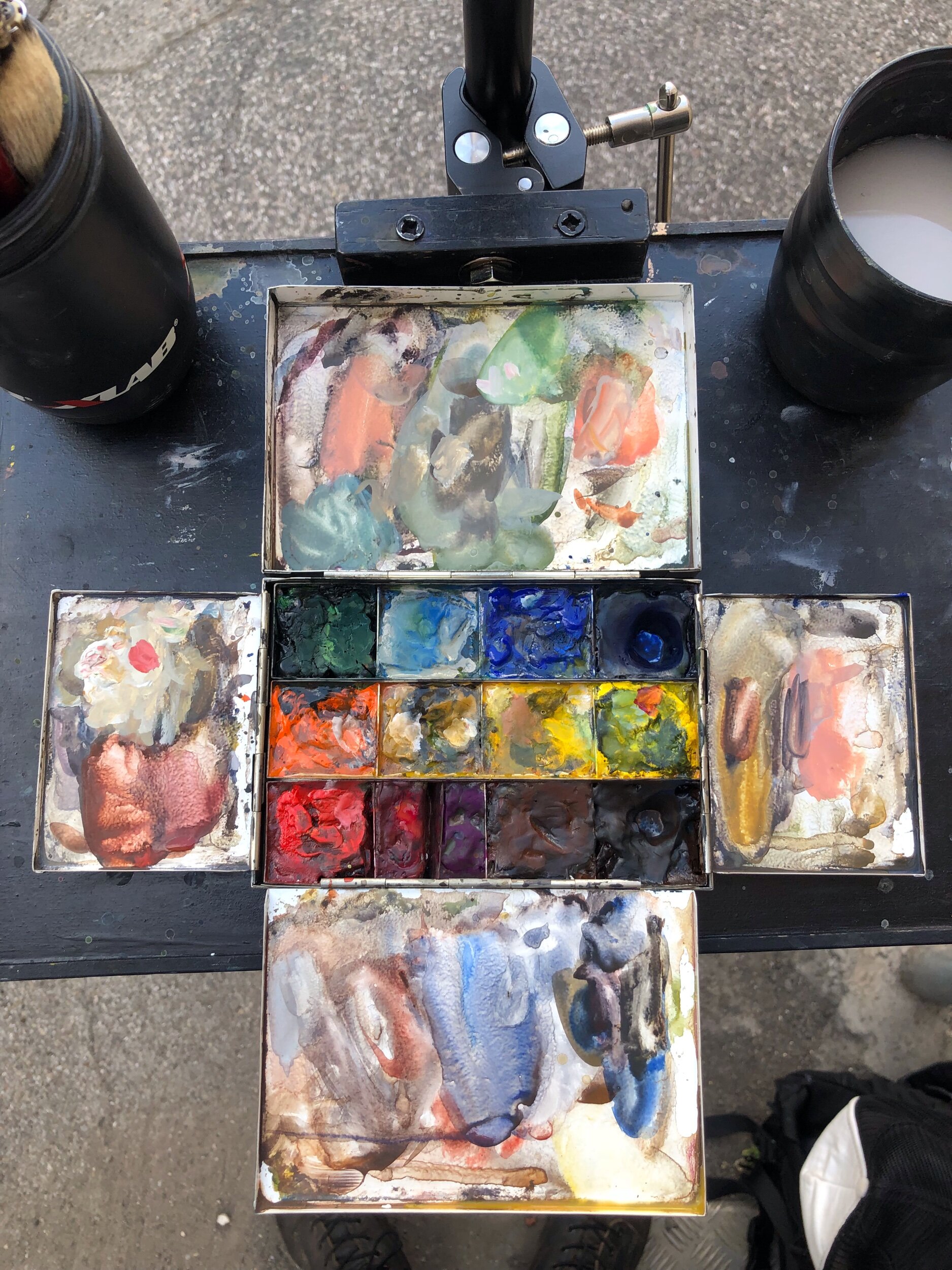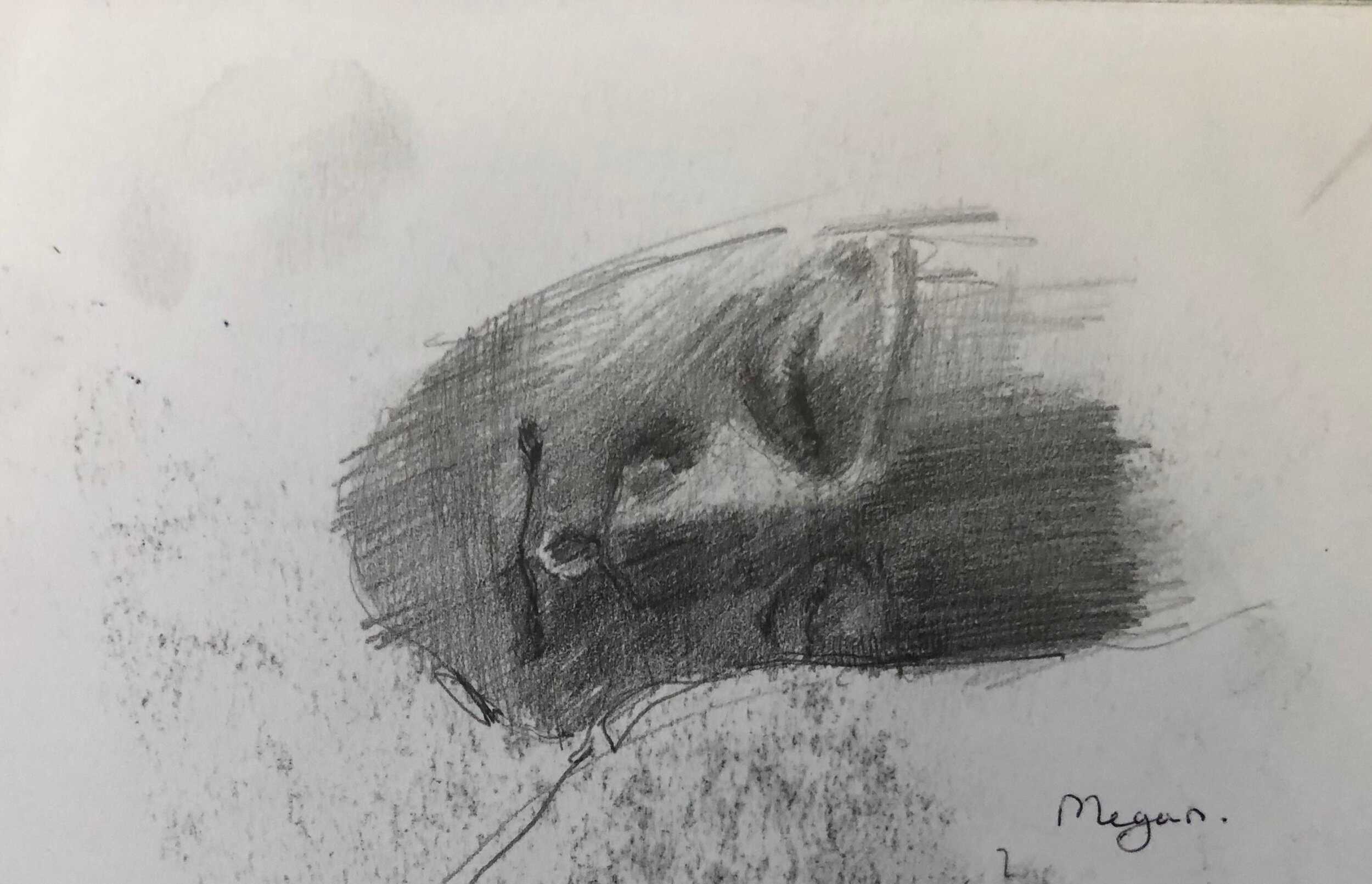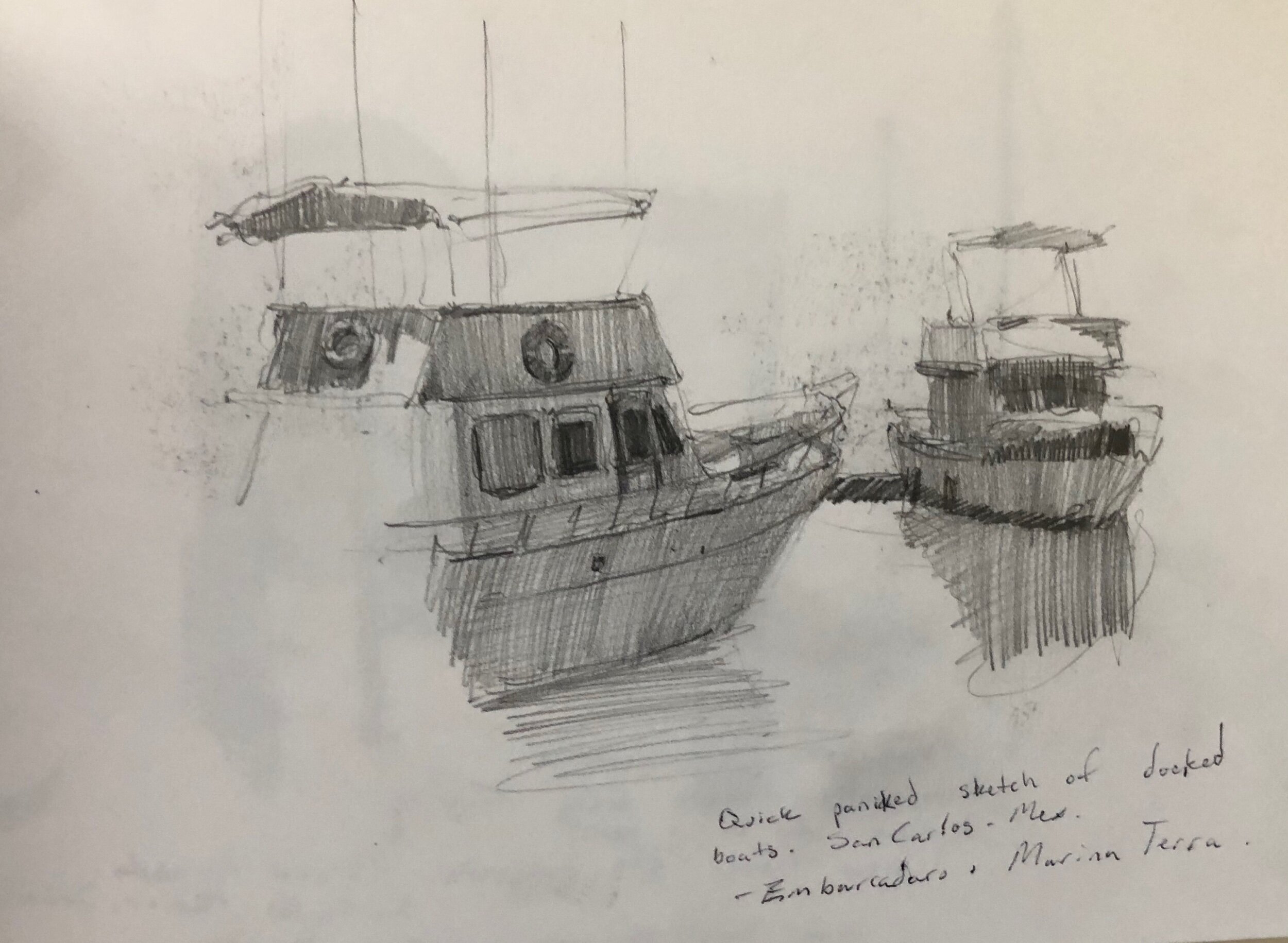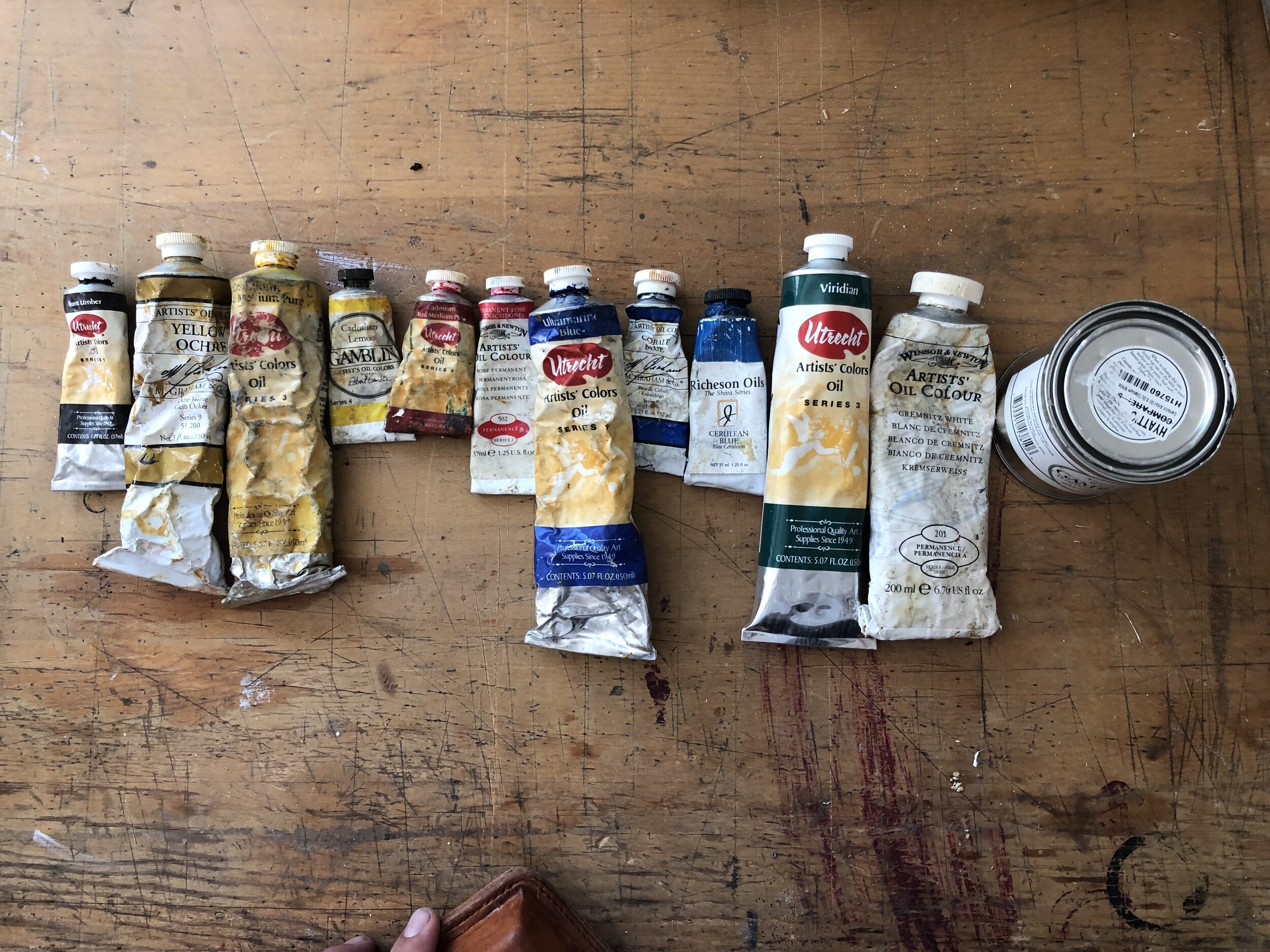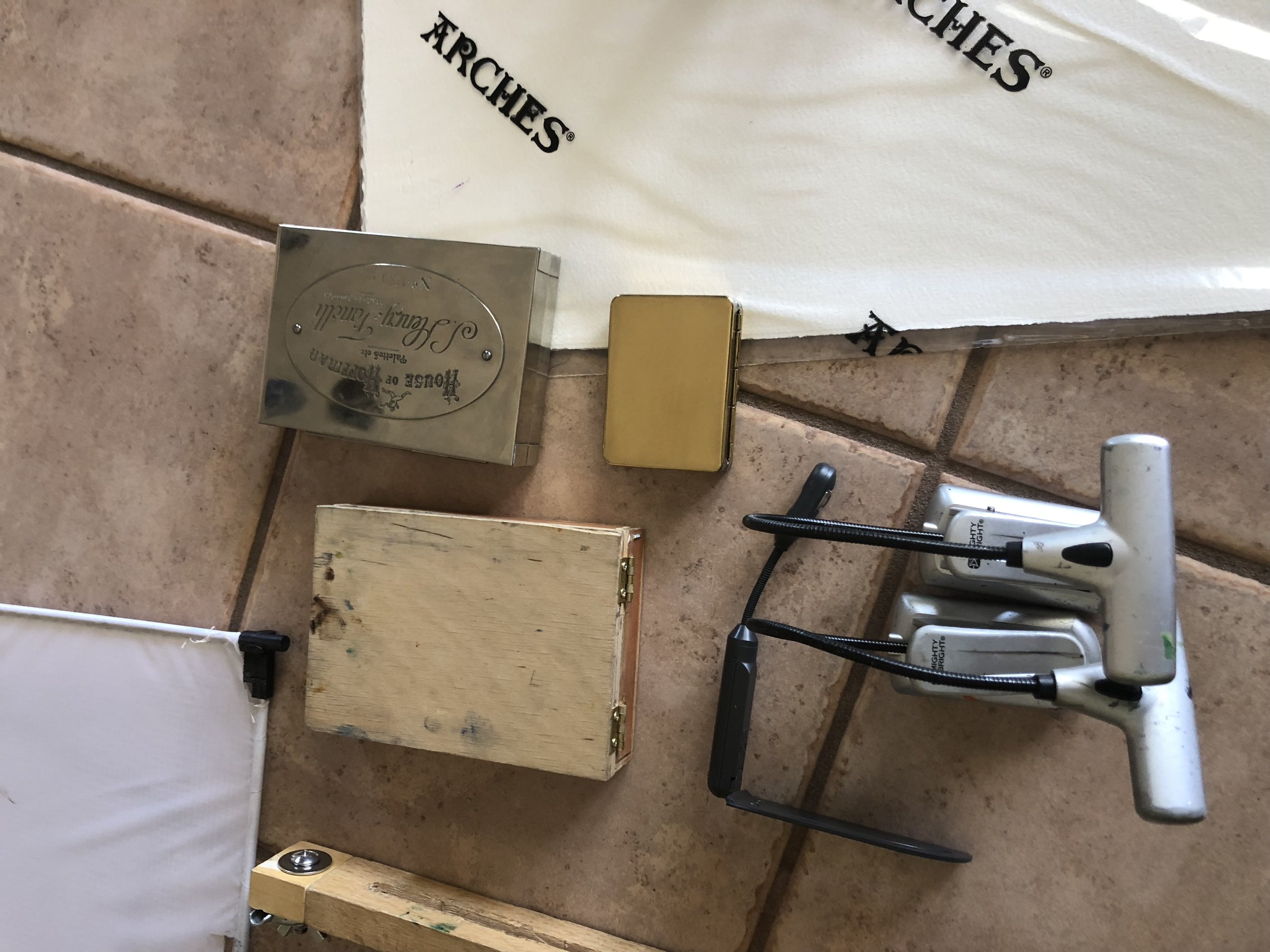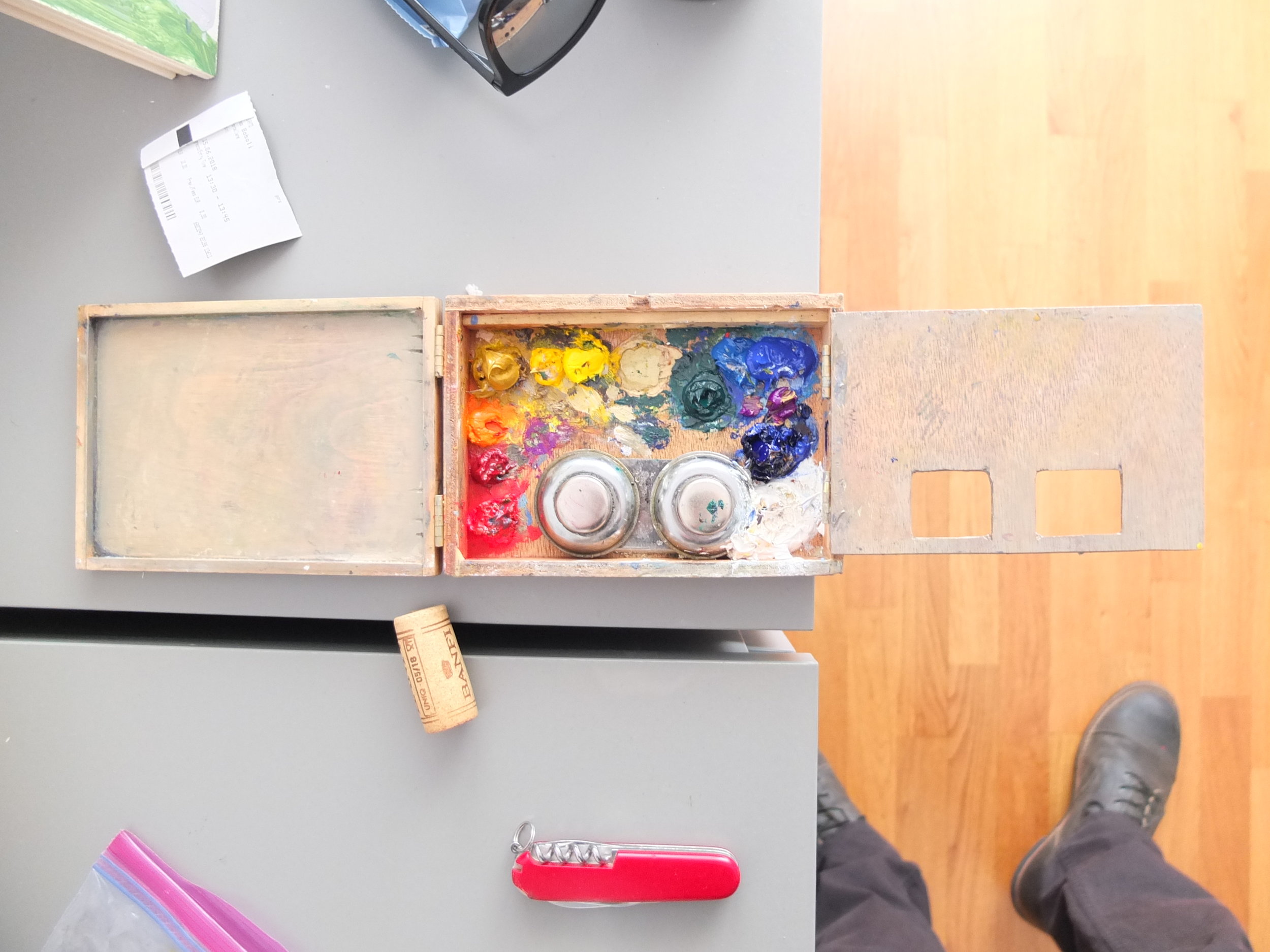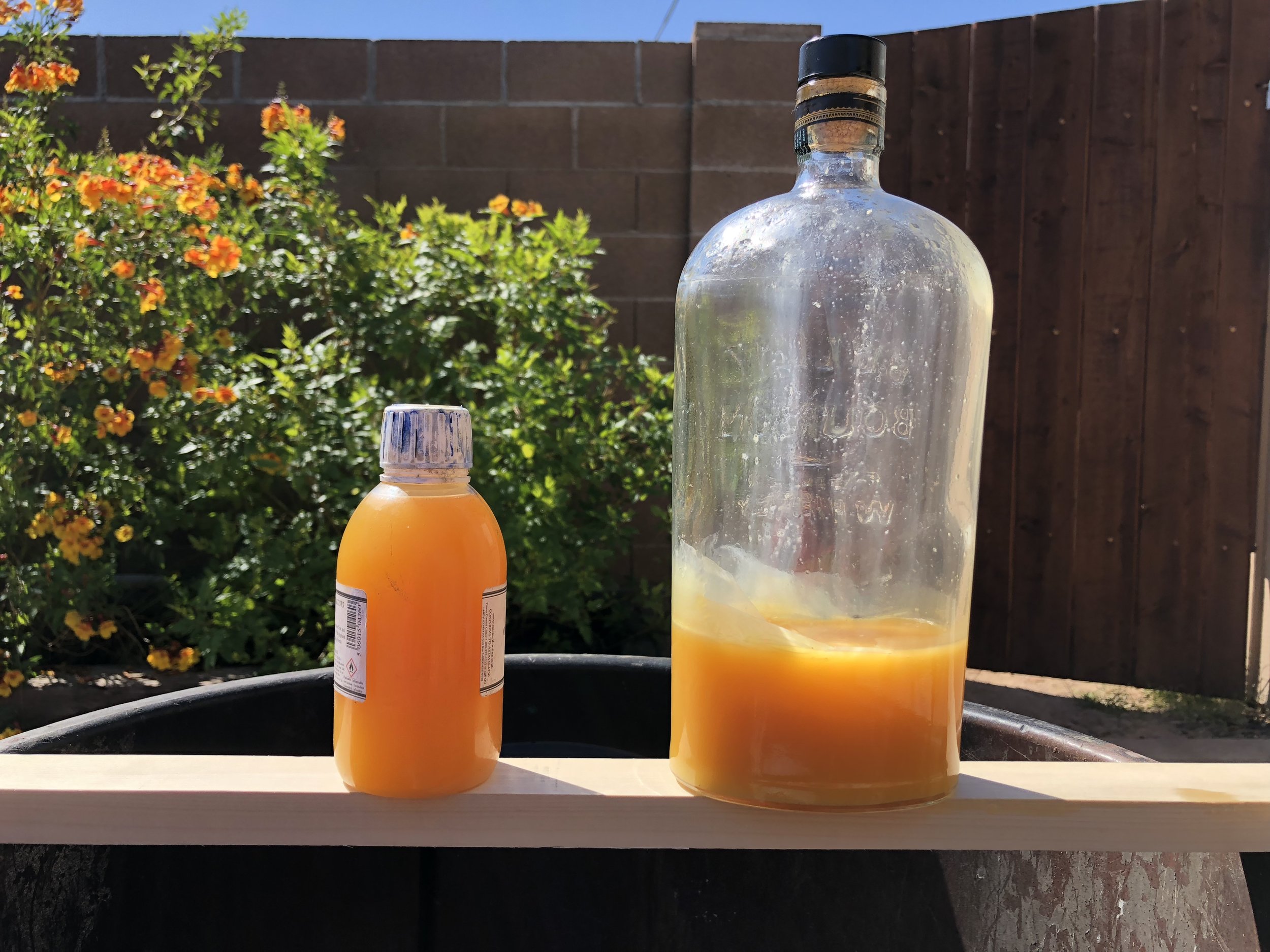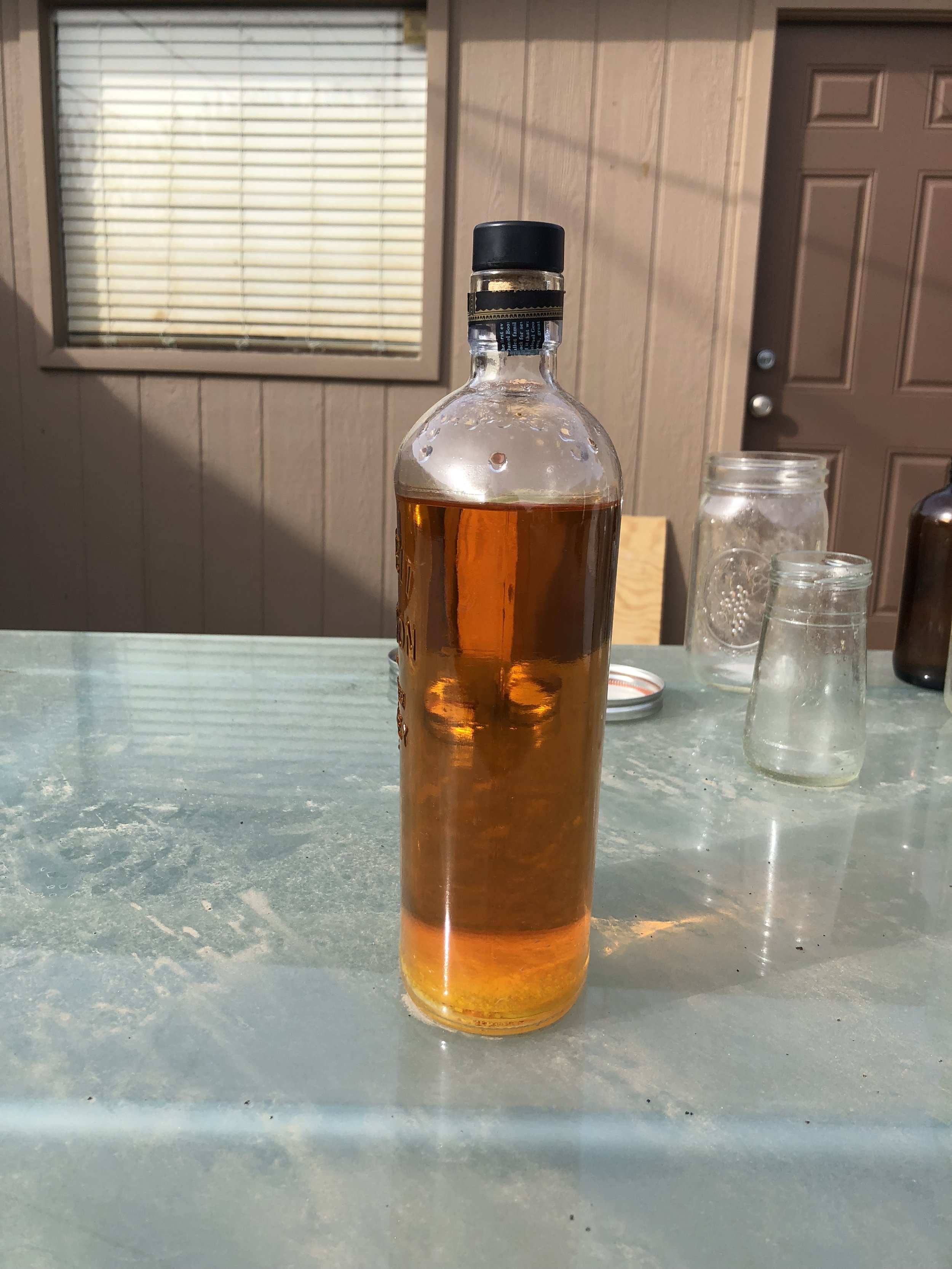My wife and I got married November of 21’ and to mark the occasion we decided to take our honeymoon trip to one of our favorite places, Florence, Italy.
Florence is a city that holds on to its past and cherishes it. It invites all with a romantic disposition to come and take part and bask in its beauty. Megan and I’s first time there together was in 2016 during a three month trip abroad. We stayed there over a month and used the time to study some figure drawing and painting at the Russian academy in Florence. It was October, we were in love, we drank lots of wine, had pizza as frequently as our budget would allow, and drew and painted our way through and around the city.
We opened up and it changed us.
That trip reformed my inner compass and helped shape my sensibilities in a profound way. It is one of the only places that when I get off the plane or train I think, “I’m home.” Since then we have been back twice, each time refreshing our spirits in the proverbial creative fountain of youth that is Florence. Retracing the steps of the Renaissance legends, the Macchiaioli, Sargent, and Annigoni(to name a couple) to try to imagine the world they must of lived in. To think about how much things have changed since they’ve gone. How much is the same?
This summer we rented a little apartment off of Via Giampaolo Orsini. This area was ideal for us to call home whilst there, as it was an easy fifteen or so minute walk to the city center. We did all of our favorite things: Paint, drink coffee, workout, explore, museum hop, people watch, and by God, drink too much wine…
We made it a point this summer to see some things that we hadn’t before(which isn’t hard to do), like the Rose Garden, which is a beautiful spot to paint and have a few glasses of wine in the evening or even mix up a couple of Negronis in a bottle or a limoncello spritz for cocktails(there is in fact bagged ice in Italy available at the stores, its Ghiaccio). One of the more delightful things about Europe in general, is that you can disappear in the seas of tourists. No one notices the man or woman indulging in a a glass of wine with a cobbled together charcuterie board sitting on a step or a bench in the park. There is a definite “laissez faire” attitude towards public smoking and drinking in most large European cities that I rather enjoy. Which furthers my belief that no cafes stand up to the magesty and love of an impromptu happy hour that I can carry in my backpack. Word to the wise, bring the Swiss Army Knife with the wine bottle opener.
Some highlights of the trip for me (besides living in Italy with my wife), were: A lecture on Sorolla by Tom Richards(Florence Academy), the Sorolla show in Milan, the Donatello show at the Palazzo Strazzo, making friends with new and incredible people(Delfina), our day trip to Cinque Terre, sunset cocktails at “House of the People” in Fiesole, our trip to the Prado, and especially the absolute surprise and wonder that was the Museu Nacional d'Art de Catalunya and the Turner show that was on display there(the large Fortuny painting hanging there is worth the flight alone from wherever you are in the world).
If you ever get a chance to go to Firenze, stop in at Zecchi, and spend the day walking down every street you can manage. Stop for a Negroni or two. Eat the whole pizza. Have an espresso. Bring some one you love. Be present.
It’s a fine place to measure yourself up to the giants, but eventually you just have to get on with it.
Until next time.
